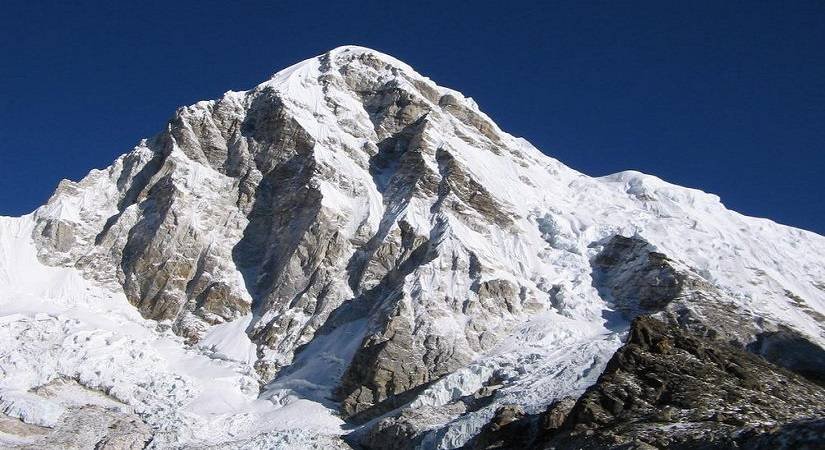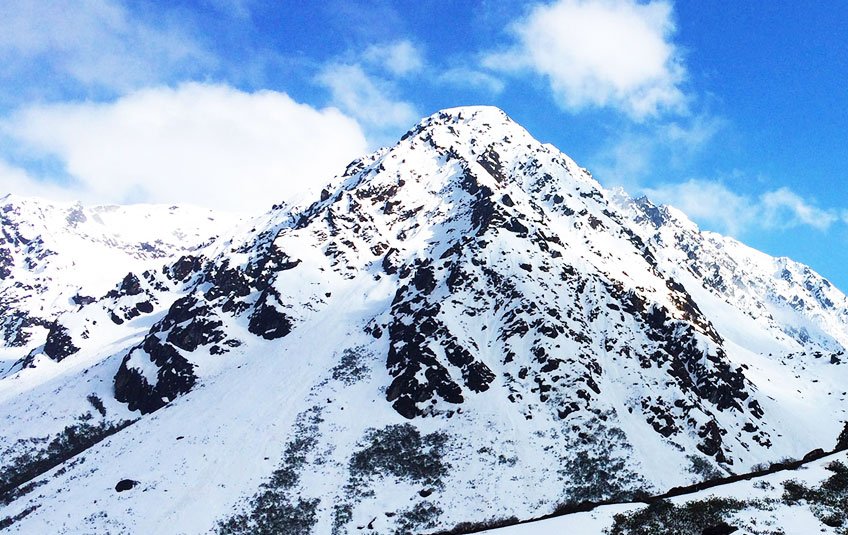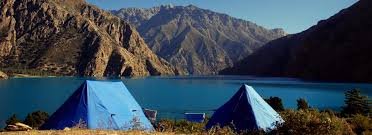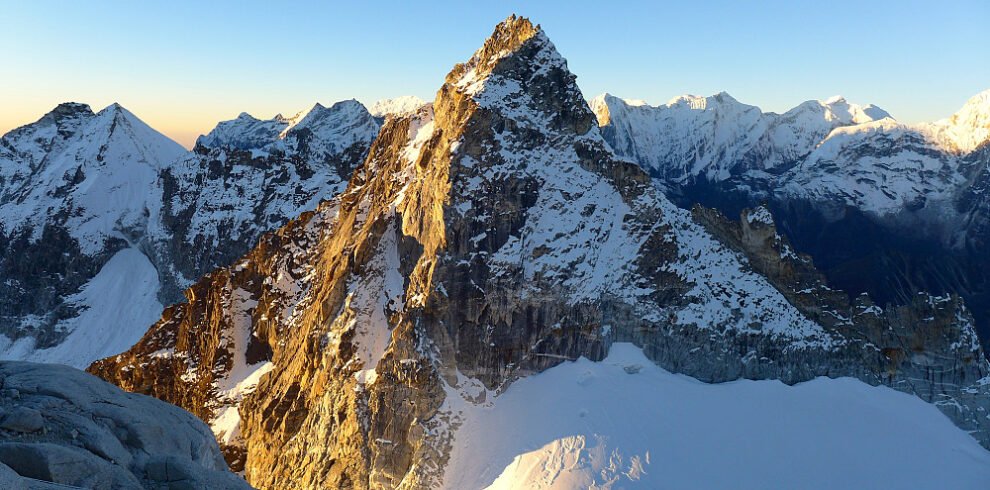Pumori Expedition is a challenging high-altitude climb of a mountain peak rising above 7,000 meters. Mount Pumori (7,161m) is one of the most demanding 7,000-meter expeditions in the Nepalese Himalayas. Situated on the Nepal-China border within the Mahalangur Himal range, Pumori lies about 8.5 kilometers west of Mount Everest and 4.5 kilometers from Nuptse. In the Sherpa language, “Pumori” means “Unmarried Daughter,” a name given by the famous mountaineer George Mallory.
The first successful ascent was made by a German-Swiss team including Gerhard Lenser on May 17, 1962, via the Southeast face. Later, in 1996, Leopold Sulovsky and Zdenek Michalec from the Czech Republic climbed a new route on the South face. An important nearby landmark is Kala Patthar (5,643m), which appears as a large brown bump beneath Pumori’s impressive south face.
Since 1962, nearly 600 climbers have reached Pumori’s summit. The peak offers some of the best views of Mount Everest and spectacular sights of Tibet, including the Rongbuk Glacier. The summit has been climbed mainly via the Southeast and Southwest routes, with the Southeast route being the standard path. According to Nepal’s Department of Tourism, the summit coordinates are 28°00’53″N latitude and 86°49’41″E longitude. Both spring and autumn seasons are ideal for climbing Pumori.
This expedition is suited for climbers seeking a demanding 7,000-meter climb within about a month. The route requires technical climbing skills and prior experience on 8,000-meter peaks or similar high-altitude expeditions, along with excellent physical fitness.
The western flank of Pumori is particularly technical and challenging. Climbers ascending via the Southwest or East face must scale a 1,000-meter wall of glacial blue ice, with slopes ranging from 50–55 degrees and occasional steep bulges reaching 70 degrees. Sherpa guides, such as Satori, set fixed ropes to assist climbers on this ice wall. Climbers and porters need to develop a steady rhythm of foot placements while using jumars to pull themselves up.
The standard Southeast approach follows the famous Khumbu region trail, leading to the Khumbu Glacier and Lobuche (4,750m). After a scenic half-hour flight to Lukla—known as the gateway to Khumbu—you trek through Namche Bazaar (3,400m), Tengboche (3,800m), Pheriche (4,200m), Lobuche (4,710m), Gorak Shep (5,150m), and finally to Everest/Lhotse Base Camp (5,200m). It typically takes 8–9 days from Kathmandu to reach the Advanced Base Camp.
Along the way, climbers enjoy stunning views of the Himalayas, visit the Sherpa and Hillary museums, experience unforgettable views of Mount Everest and the Tibetan plateau, explore diverse flora and fauna, and visit the historic Tengboche Monastery. This makes the expedition both a physical challenge and a culturally rich experience.
Trip Info
-
Hotel/ Tea hours/ camping
-
Autumn - Spring
-
7119m.
-
Car/Flight/ Jeep/ Tourist Bus
-
5/6 hours
Overview
Alpine Treks Nepal follows the standard route on the Southeast ridge, a grade 3 snow and ice climb that requires a good understanding of alpine climbing techniques and familiarity with the effects of high altitude. Alpine Treks Nepal always sets up II to III camps above the base camp at 5300m. Climb through the glaciers and knife-edged ridge of hill side for about 4-5 hours and reach Camp I at 5700m. From camp I, we climb the face with 40-60 degrees slope and pass through a snow wall to reach camp II at 6200m. From camp II, climb through ice walls and crevasses to reach camp III at 6500m. Passing through crevasses, climb up to Pumori cliff and then to the summit.
Trip Highlights
- Mount Pumori expedition (7,161m) is a technically demanding climb, ideal for experienced mountaineers.
- Mount Pumori is Located on the Nepal-China border, 8.5 km west of Everest and 4.5 km from Nuptse.
- The peak was First climbed in 1962 by Gerhard Lenser on a German-Swiss expedition via the Southeast face.
- Named "Pumori," meaning "Unmarried Daughter," by English mountaineer George Mallory.
- Offers stunning panoramas of Everest, Nuptse, Rongbuk Glacier, and the Tibetan Plateau.
- Climbers face a 1,000m ice wall with gradients of 50-70 degrees, requiring advanced skills.
- The route passes through Lukla, Namche Bazaar, Tengboche, Pheriche, and Gorak Shep to Base Camp.
- Visit Tengboche Monastery, Sherpa villages, and the Hillary Museum.
- Trek through Sagarmatha National Park, home to unique flora and fauna.





